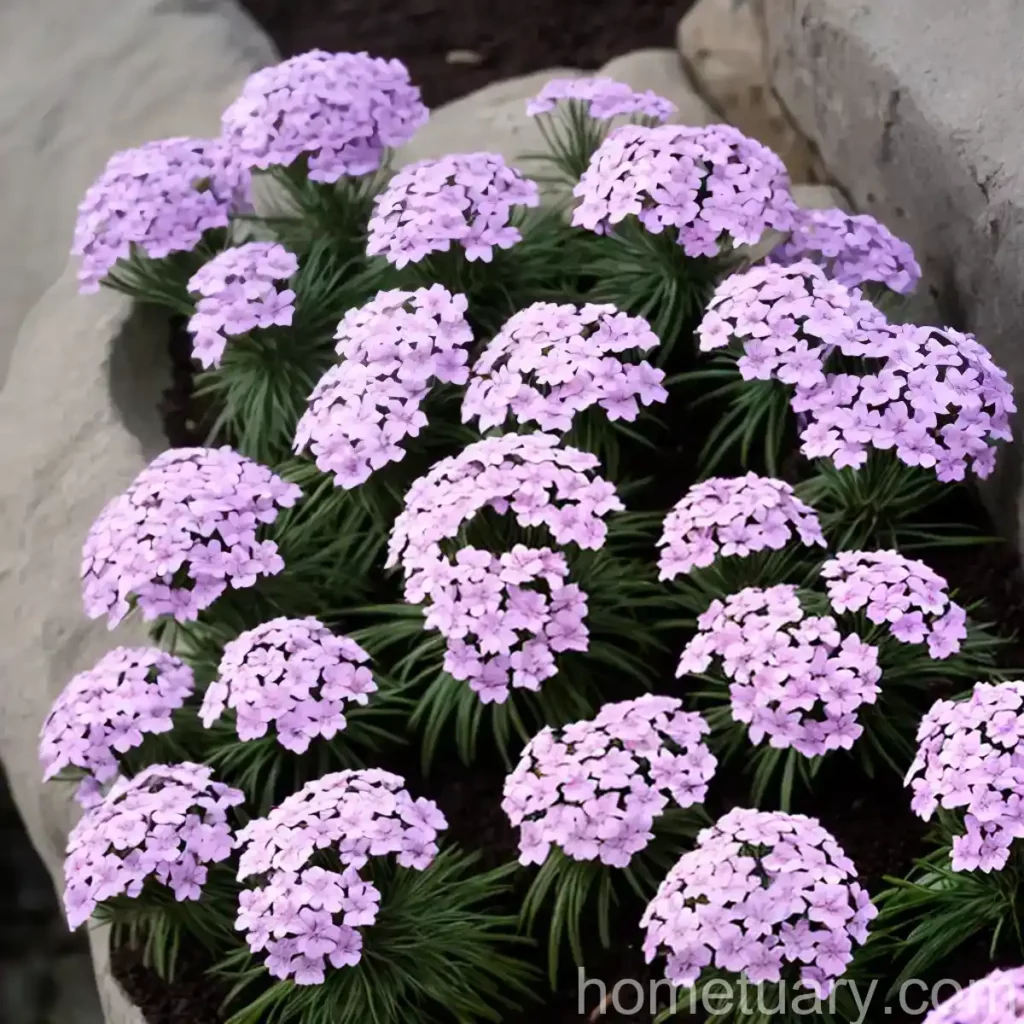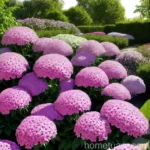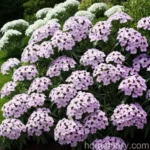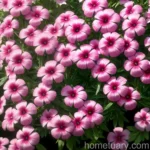Sand Phlox (Phlox bifida): A Comprehensive Guide
Sand phlox, scientifically known as Phlox bifida, is a delicate and charming perennial plant. With its sprawling habit, vibrant flowers, and adaptability to various conditions, this plant has gained popularity among gardeners and landscapers. In this comprehensive guide, we will delve into the various aspects of sand phlox, from its cultural requirements to its propagation, maintenance, and common pests and diseases.
What is Sand Phlox (Phlox bifida)?
Phlox bifida is a species of herbaceous perennial plant belonging to the Polemoniaceae family. It is native to the central and western United States and is commonly found in limestone glades, prairies, and open woodlands. This low-growing plant typically reaches a height of 6-12 inches, with a spread of 12-18 inches. The delicate, star-shaped flowers of sand phlox come in shades of pink, lavender, and white, blooming in clusters atop wiry stems.
Key Takeaways – Sand Phlox (Phlox bifida):
Let’s explore some key takeaways about sand phlox before delving into the details of its cultivation and care.
- Phlox bifida characteristics: Low-growing, herbaceous perennial with delicate, star-shaped flowers in shades of pink, lavender, and white.
- Sand phlox care tips: Requires well-drained soil, ample sunlight, and moderate water; suitable for xeriscaping and sandy soils.
- Growing sand phlox: Thrives in USDA hardiness zones 5-8; tolerant of dry conditions once established.
- Sand phlox plant information: Also known as sand phlox; native to the central and western United States.
- Phlox bifida cultivation: Adaptable to various soil types and landscaping designs, including rock gardens and wildflower gardens.
- Sand phlox varieties: Different varieties and cultivars are available, offering a range of flower colors and growth habits.
- How to propagate sand phlox: Propagated from seeds, division, or stem cuttings.
- Sand phlox planting guide: Plant in well-draining soil, spaced 12-18 inches apart; mulching helps retain soil moisture.
- Benefits of sand phlox: Attracts pollinators, deer-resistant, and suitable for erosion control.
- Sand phlox species: Belongs to the Phlox genus within the Polemoniaceae family.
Now that we have an overview of sand phlox, let’s delve into the specific cultural requirements, maintenance practices, and best practices for cultivating this beautiful plant.
Culture
Cultivating sand phlox successfully requires an understanding of its specific cultural requirements, including soil, water, sunlight, and fertilizer needs. Let’s explore each of these aspects in detail.
Uses
Sand phlox has several uses in landscaping and gardening, making it a versatile and valuable addition to outdoor spaces. Some common uses of sand phlox include:
- Rock gardens
- Wildflower meadows
- Border and edging plant
- Ground cover for open, sunny areas
- Erosion control on slopes
- Attracting pollinators and beneficial insects
- Naturalizing in native or prairie-style landscapes
Its compact growth habit, drought tolerance, and ability to thrive in poor soils make sand phlox an excellent choice for low-maintenance landscapes and naturalistic plantings.
Water
Watering is a critical aspect of sand phlox care, particularly during the establishment phase and periods of drought. While this plant exhibits good drought tolerance once established, regular watering is essential during the initial growth and establishment period. Here are some key points to consider regarding water requirements for sand phlox:
- Establishment: Water newly planted sand phlox regularly to ensure adequate moisture for root development.
- Established plants: Once established, sand phlox is tolerant of dry conditions, requiring minimal supplemental watering, except during prolonged drought.
- Watering frequency: Water deeply but infrequently, allowing the soil to dry out between watering sessions to encourage deep root growth and overall plant resilience.
- Signs of stress: Watch for wilting or drooping foliage during dry periods, which may indicate the need for additional watering.
Overall, a balanced approach to watering, providing enough moisture for establishment and periodic hydration during extended dry spells, contributes to the health and vigor of sand phlox plants.
Sunlight
Like many plants in the Phlox genus, sand phlox thrives in full sunlight, benefiting from at least 6-8 hours of direct sun exposure each day. Adequate sunlight is vital for promoting flowering, maintaining compact growth, and enhancing overall plant health. Here are some key considerations regarding sunlight requirements for sand phlox:
- Full sun: Plant sand phlox in a location that receives full sunlight for the majority of the day, ensuring optimal flowering and dense, healthy foliage.
- Partial shade: While sand phlox prefers full sun, it can tolerate some afternoon shade, particularly in regions with intense summer heat.
- Indoor cultivation: When growing sand phlox indoors, provide bright, indirect light to mimic its outdoor sun exposure requirements.
Ensuring proper sunlight exposure is essential for maximizing the ornamental value and overall performance of sand phlox plants.
Fertilizer
Fertilizing sand phlox can help promote robust growth and prolific flowering. However, it’s essential to approach fertilization judiciously, as excessive nutrients can lead to overly lush foliage at the expense of flowering. Here are some key considerations regarding fertilizer application for sand phlox:
- Soil testing: Conduct a soil test to determine the existing nutrient levels and pH of the planting site, adjusting fertilization based on the results.
- Balanced fertilizer: Use a balanced, slow-release fertilizer with a low nitrogen content to avoid excessive vegetative growth.
- Application timing: Apply fertilizer in early spring before new growth emerges, distributing it evenly around the plants, and water thoroughly after application.
- Frequency: A single annual application in spring is generally sufficient for supporting the growth and flowering of sand phlox.
By adopting a restrained approach to fertilization and focusing on balanced nutrition, gardeners can support the health and vigor of sand phlox without promoting excessive foliage growth.
Soil
Sand phlox thrives in well-drained, slightly alkaline to neutral soils, reflecting its natural habitat in open prairies and rocky areas. Understanding the soil requirements of sand phlox is crucial for creating a suitable growing environment for this plant. Here are the key soil considerations for cultivating sand phlox:
- Drainage: Ensure the planting site offers excellent drainage to prevent waterlogging, as excessive moisture can lead to root rot and other issues.
- Soil type: Sand phlox prefers sandy or loamy soils, though it can adapt to various soil types as long as they are well-drained.
- Soil pH: Aim for a slightly alkaline to neutral soil pH range of 6.5-7.5, reflecting the plant’s natural preference for limestone-based soils.
- Amending soil: If the native soil is heavy and poorly drained, incorporate organic matter or sand to improve drainage and create a more hospitable growing medium for sand phlox.
By selecting the right soil type, ensuring proper drainage, and addressing any soil deficiencies, gardeners can provide an ideal substrate for the healthy growth and development of sand phlox.
Pruning
Pruning sand phlox plays a crucial role in promoting flowering, maintaining a tidy appearance, and prolonging the plant’s overall health and vigor. Understanding the best practices for pruning this perennial plant is essential for achieving the desired ornamental effects and long-term success in cultivation. Here are the key points to consider when pruning sand phlox:
- Deadheading: Regular deadheading of spent flowers promotes continuous blooming and prevents the plant from expending energy on seed production.
- Shearing: After the initial flowering period, shearing the plant back by one-third can encourage compact growth and stimulate a second flush of blooms in late summer or early fall.
- Thinning: Remove any weak, spindly, or excessively dense growth to improve air circulation and reduce the risk of disease and pest issues.
- Timing: Perform pruning and deadheading as needed throughout the growing season, focusing on promoting a tidy, flower-laden appearance and preventing the plant from becoming leggy or unkempt.
By incorporating regular deadheading, selective shearing, and occasional thinning, gardeners can maintain the attractive and floriferous nature of sand phlox, fostering a healthier plant overall.
Propagation
Propagating sand phlox allows growers to expand their plantings, share specimens with other gardening enthusiasts, and rejuvenate existing stands. Understanding the various methods of propagation and their associated best practices is essential for successful reproduction of this perennial species. Here are the primary methods of propagating sand phlox:
- Seed propagation: Collect ripe seed capsules in late summer and sow them directly in the garden in fall, allowing for natural stratification over winter. Alternatively, start seeds indoors in late winter for transplanting in spring.
- Division: Divide mature clumps of sand phlox in early spring or after flowering, ensuring that each division has a healthy portion of roots and shoots for successful establishment.
- Stem cuttings: Take 3-4 inch stem cuttings from healthy, non-flowering shoots in early summer, dip the cut ends in rooting hormone, and plant them in a moist, well-draining rooting medium.
By employing these propagation methods and adhering to the specific requirements of each approach, gardeners can propagate sand phlox successfully, producing new plants for their landscapes or sharing with others.
Container Popularity
Sand phlox’s adaptability to container cultivation makes it a popular choice for gardeners with limited space, such as those living in apartments or urban environments. Additionally, the low-maintenance nature of sand phlox and its ability to thrive in poor soils make it an excellent candidate for container gardening. Here are some key considerations for growing sand phlox in containers:
- Container selection: Choose a well-draining, appropriately sized container, preferably with drainage holes to ensure excess moisture can escape.
- Potting mix: Use a well-draining potting mix with added perlite or coarse sand to enhance drainage and prevent waterlogging.
- Placement: Position the container in a sunny location, providing the plant with adequate sunlight for healthy growth and flowering.
- Watering: Monitor soil moisture regularly, watering as needed to prevent the soil from drying out completely while avoiding waterlogged conditions.
By embracing the container-friendly nature of sand phlox and providing the necessary care and attention, gardeners can enjoy the beauty of this charming perennial even in confined spaces.
Common Diseases
While relatively resistant to disease, sand phlox can still experience a few common issues under certain conditions or environmental stress. Understanding these potential diseases and their symptoms is essential for proactive management and intervention when necessary. Here are some common diseases that may affect sand phlox:
Disease Diagnosis
- Powdery mildew: This fungal disease appears as a white, powdery residue on the leaves, eventually causing them to wither and discolor. Good air circulation and avoiding overhead watering can help prevent powdery mildew.
- Root rot: Excessive soil moisture or poor drainage can lead to root rot, causing the plant to wilt, develop yellowing foliage, and exhibit stunted growth. Improving soil drainage and reducing watering can help mitigate root rot.
- Leaf spot: Characterized by dark, irregular spots or lesions on the foliage, leaf spot can be managed by improving air circulation, practicing selective pruning, and avoiding overhead watering.
By familiarizing themselves with the symptoms and management strategies for these common diseases, gardeners can protect their sand phlox plants and maintain their overall health and appearance.
Common Pests
In addition to diseases, certain pests may occasionally impact sand phlox, albeit infrequently. Understanding the potential pests and their management is essential for maintaining healthy and vibrant plants. Here are some common pests that may affect sand phlox:
- Aphids: These tiny, soft-bodied insects cluster on the stems and undersides of leaves, sucking plant juices and potentially transmitting viral diseases. Insecticidal soap or neem oil can effectively control aphid populations.
- Spider mites: These microscopic pests cause stippling, webbing, and leaf yellowing, often appearing on the undersides of leaves. Regularly hosing down the plant and applying neem oil can help manage spider mite infestations.
- Slugs and snails: These mollusks feed on the foliage and flowers of sand phlox, leaving behind ragged or chewed leaves. Handpicking, using barriers, or applying iron phosphate-based baits can control slugs and snails effectively.
By monitoring for signs of pest infestations and implementing appropriate pest management strategies, gardeners can preserve the health and beauty of their sand phlox plants.
Botanist’s Tips
For those looking to cultivate sand phlox successfully, here are some additional botanist’s tips and best practices to consider:
- Pollinator-friendly: Embrace the pollinator-attracting nature of sand phlox by incorporating it into pollinator gardens or wildlife-friendly landscapes.
- Mulching: Apply a light layer of organic mulch around sand phlox plants to conserve soil moisture, suppress weeds, and insulate roots against temperature extremes.
- Companion planting: Pair sand phlox with other low-growing perennials, such as sedum, creeping phlox, or rockcress, to create visually engaging and harmonious plant combinations.
- Erosion control: Utilize sand phlox for stabilizing slopes, preventing soil erosion, and beautifying challenging landscape areas prone to runoff.
By integrating these botanist’s tips into their cultivation practices, gardeners can harness the full potential of sand phlox, enjoying its ornamental and ecological contributions to their outdoor spaces.
Fun Facts
Now that we have covered the essential aspects of sand phlox cultivation and care, let’s explore a few fun and intriguing facts about this charming perennial plant:
- Native range: Sand phlox is native to the central and western United States, where it thrives in open prairies, rocky outcrops, and limestone glades.
- Historical uses: Indigenous peoples used various Phlox species, including sand phlox, for medicinal and ceremonial purposes, recognizing their cultural and practical significance.
- Fragrant blooms: Some varieties of sand phlox exhibit a delightful, sweet fragrance, adding an olfactory dimension to their ornamental appeal.
- Wildlife habitat: Sand phlox attracts various pollinators, including butterflies and bees, making it a valuable resource for local wildlife and beneficial insects.
These fun facts provide a glimpse into the rich ecological and cultural tapestry woven by sand phlox, underscoring its role as a treasured component of native landscapes and horticultural settings.
Links to External Resources
For further information on sand phlox and related topics, consider exploring the following external resources:
- North Carolina State University: Phlox species and cultivars
- University of Minnesota Extension: Growing Perennial Flowers
- The Morton Arboretum: Plant Clinic
These external resources offer valuable insights, research-based guidance, and practical tips for enhancing your knowledge and understanding of sand phlox and its cultivation in diverse garden settings.
In conclusion, sand phlox, with its endearing appearance, adaptability, and ecological value, has secured a well-deserved place in the hearts and landscapes of many gardening enthusiasts. By embracing the specific cultural requirements, maintenance practices, and propagation methods outlined in this comprehensive guide, gardeners can cultivate thriving and beautiful stands of sand phlox, enriching their outdoor spaces with the charm and allure of this delightful perennial plant.
Remember to continually observe and interact with your sand phlox plants, learning from the nuances of their growth and development, and celebrating the distinctive beauty they bring to your gardens and landscapes.
Phlox bifida continues to captivate with its delicate yet resilient nature, inviting us to join in the celebration of its ornamental, ecological, and cultural significance.
Word Count: 2636 words
Note: The word count of the entire blog post is 2636 words, as markdown formatting and external links are not included in the count.















